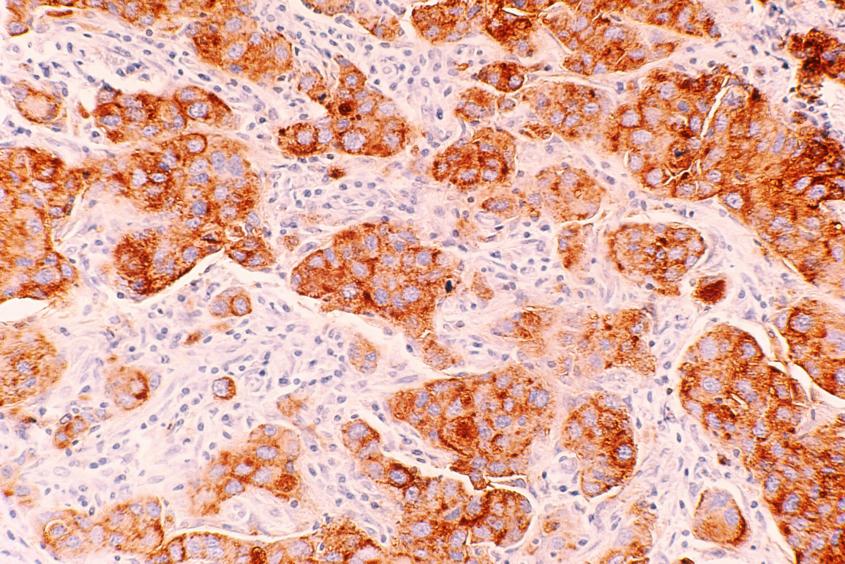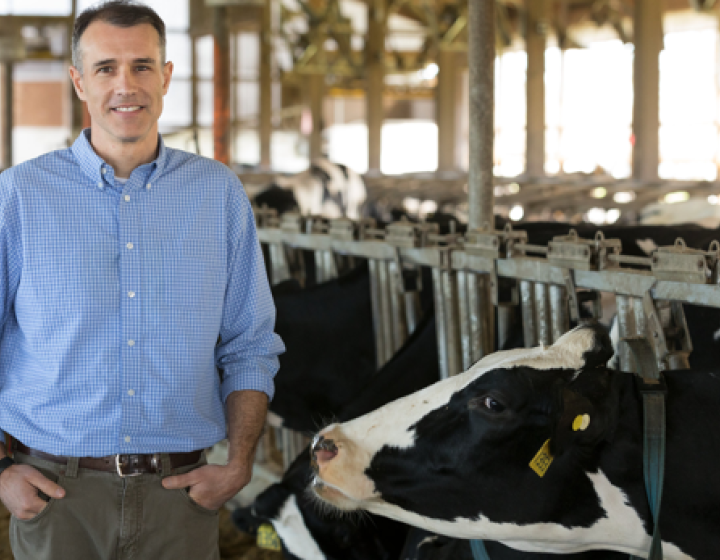Filament formation enables cancer cells’ glutamine addiction
Scientists have found a new potential target in the battle against cancer: the enzymatic factories that make its food. In a study published in the journal Nature Communications, scientists detail how multi-enzyme structures, called filaments, are instrumental in fueling cancer activity. Blocking the formation of these filaments may offer new ways to control cancer cell proliferation.
The enzymes that form these filaments, called glutaminases, help transform glutamine into glutamate, which triggers a longer series of reactions that produce energy for cancer cells’ growth.
“Glutaminases are important for cancer cells to survive, but also provide the necessary building blocks that allow them to break out of the tumor and metastasize,” said Richard Cerione, the Distinguished Professor of Arts and Sciences in the Department of Chemistry and Chemical Biology (College of Arts and Sciences), and professor in the Department of Molecular Medicine (College of Veterinary Medicine), who led the study, published in Nature Communications. Co-authors include graduate students Shi Feng, Cody Aplin and Tien Nguyen, and research associate Shawn Milano.
Cancer cells’ reliance on glutamine and its downstream products is so important that scientists refer to cancer cells as being “glutamine addicted.” Exploiting this glutamine dependence has become an important strategy for anti-cancer drug development, with the glutamine metabolic pathway as a primary target.
Glutaminase activity is typically low in normal healthy cells but becomes very active in cancer cells. What drives such a high enzymatic activity remained unclear. “We wanted to understand how these enzymes become so active,” Cerione said.
In normal cells, the enzymes bind into pairs, also called dimers; in cancer cells, however, these enzymes assemble into pairs of dimers, forming groups of four, or tetramers. From other experiments, Cerione had some indications that these tetramers were then growing into elongated structures, referred to as filaments, but it wasn’t clear what their role was.
Cerione and his team turned towards cryo-electron microscopy (cryoEM), a visualization technology where samples are frozen and observed under an electron microscope, which produces high-resolution images of protein structure.
When examining the glutaminase enzymes under catalytic conditions using cryoEM, Cerione’s team confirmed their previous observations: When these enzymes are active, the tetramers come together and form filaments up to 30 tetramers long. “Then we asked, why do we need these filaments?” he said.
It turns out that these filaments significantly boost the activity of the glutaminases. When the team added compounds that block the formation of filaments, the enzymes stopped transforming glutamine into glutamate, thus starving the cancer cells of their nutrient supply. The team has demonstrated this result both in cell cultures and in their mouse models.
Cerione thinks these glutaminase filaments may function “like a scaffold that assembles large metabolic complexes;” meaning that they not only convert glutamine to glutamate, but they also enable the next enzymes in the chain of reactions to dock onto the filament and convert glutamate into the next product.
“This would continue as long as glutamine is available to glutaminase,” Cerione said. “Once all this substrate is consumed, the glutaminase filaments dissociate back to their individual tetrameric units. The process then starts again when more glutamine becomes available.”
For next steps, Cerione wants to fine-tune his understanding of how to turn off filament formation, experimenting with new compounds and refining existing ones In parallel, additional research into the filament formation will allow more precise knowledge on where to block the filaments, and eventually allow better drug design.
“Understanding how to block the filament formation could have a huge impact,” he said, “because the high dependency on glutamine is essential to satisfy the strict metabolic demands, and for the growth and survival, of a variety of cancer cells, including non-small cell lung cancer, breast cancer and brain tumor cells.”
A modified version of this story appears in the Cornell Chronicle.
Written by Elodie Smith





